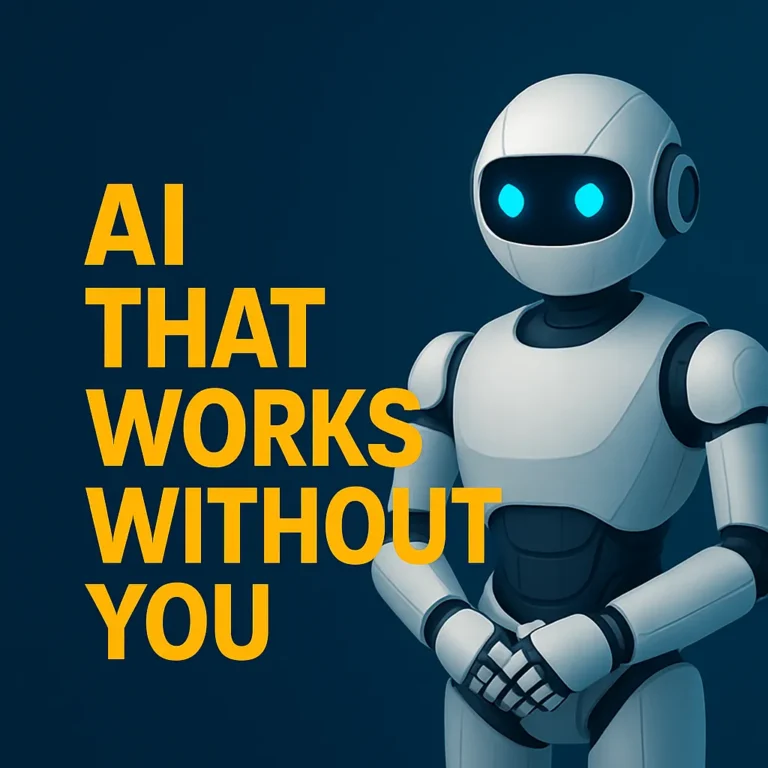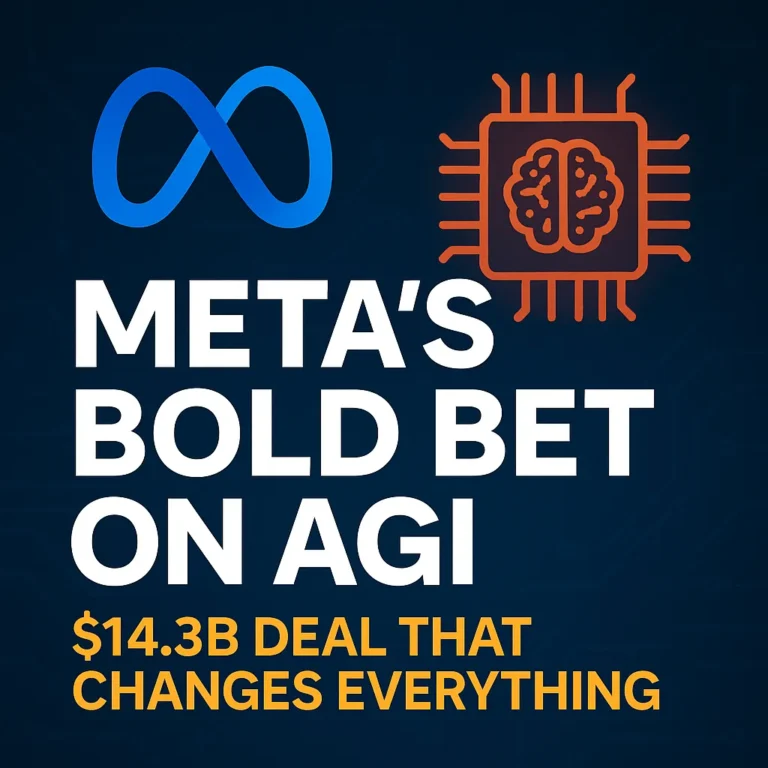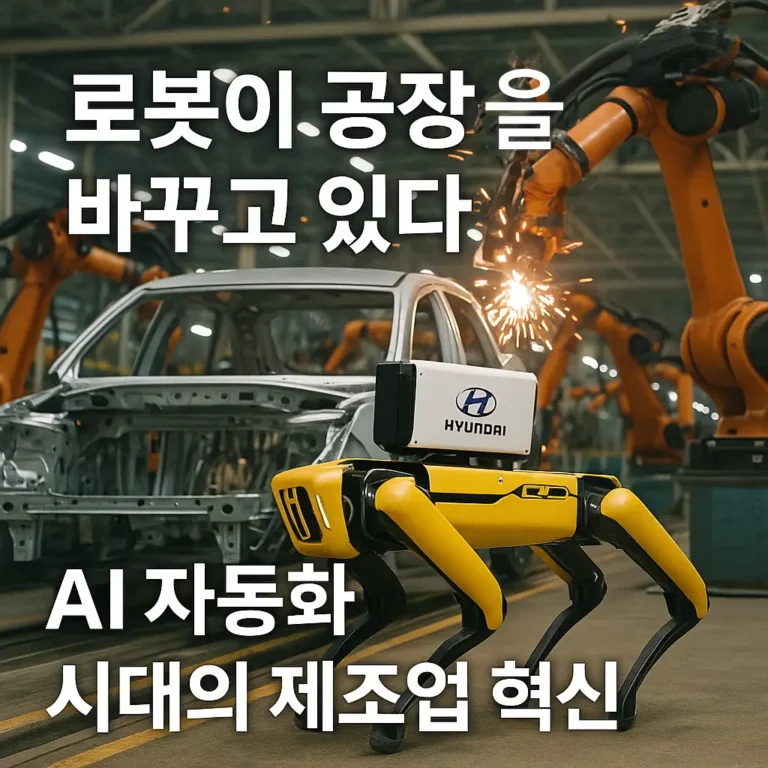Skild AI Robot Brain: Why Samsung and Nvidia Backed a $4.5 Billion Bet on the Future of Robotics
Welcome to Global Tech Spectrum, where we deliver insights at the intersection of emerging technologies and economic transformation. In this post, we focus on a startup that is rapidly gaining attention for reshaping the future of robotics.
Skild AI recently raised 35 million dollars from Samsung and Nvidia as part of a much larger Series B funding round. The company is now valued at 4.5 billion dollars. That level of investment signals more than just interest in a promising product. It reflects a growing belief that general-purpose robotics platforms could define the next era of automation.
At the center of this momentum is the Skild AI Robot Brain, a unified artificial intelligence model designed to power a wide range of machines. Unlike traditional robotics systems that require specialized code for each task or machine, this model adapts to different environments and platforms through a single, scalable training process.
In the sections ahead, we will explore what makes the Skild AI Robot Brain unique, why strategic investors are placing large bets on it, and how it could drive the shift from narrow automation to flexible, physical intelligence across industries.
The Origins of Skild AI Robot Brain: Meet the Founders and Vision
The story of the Skild AI Robot Brain begins with a team of engineers and researchers who recognized a gap between what robots can do today and what they should be capable of tomorrow. Skild AI was founded in 2023 by alumni of Carnegie Mellon University, OpenAI, and other leading institutions known for breakthroughs in artificial intelligence and robotics. Their aim was not to build another specialized robot, but to create a unified intelligence system that could power many types of machines.
Headquartered in Pittsburgh, a city known for its robotics innovation and deep academic roots, Skild AI quickly stood out for its focus on generalization. Instead of building task-specific robots, the team concentrated on developing a foundation model that could adapt to a broad range of physical environments and real-world tasks.
This bold vision drew early attention from top-tier investors. Within a year, Skild AI raised a Series A round that valued the company at $1.5 billion. That milestone set the stage for the much larger Series B round that followed, with backing from Samsung and Nvidia.
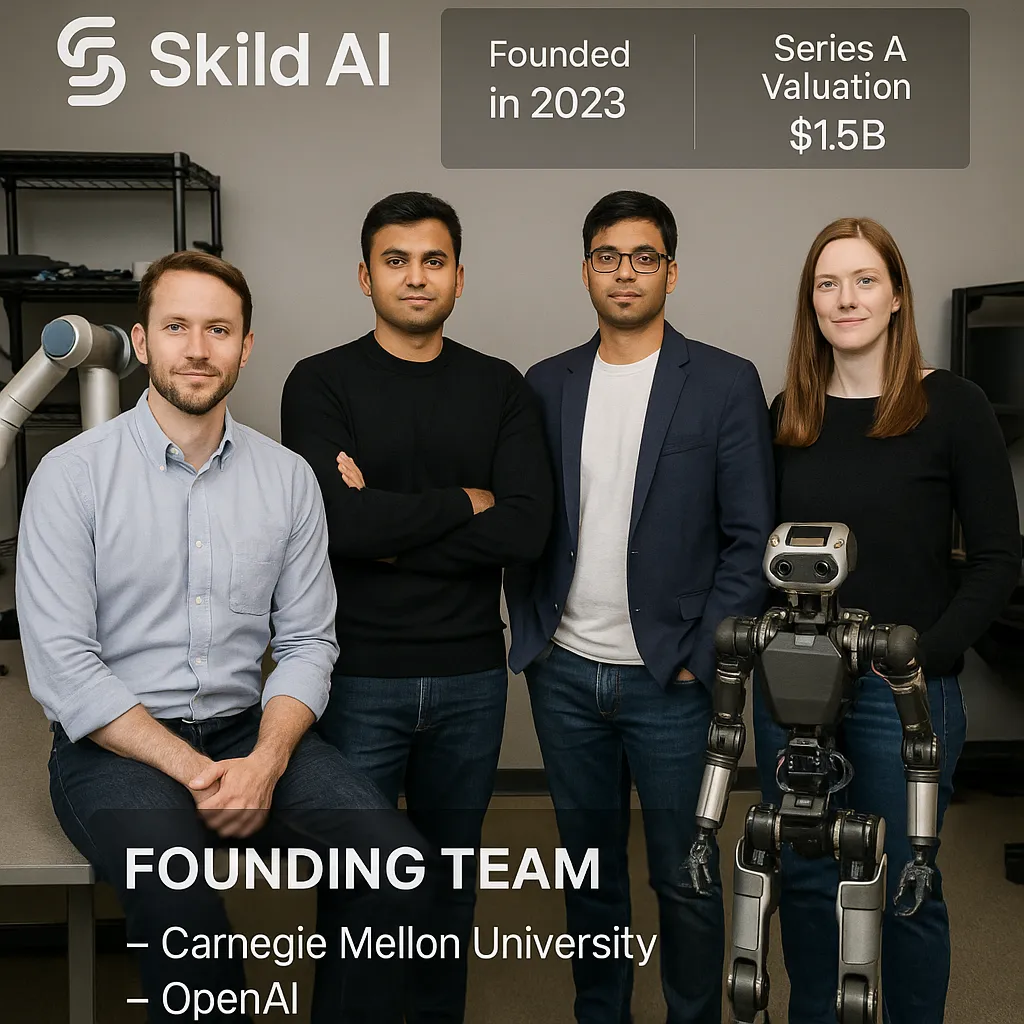
How the Skild AI Robot Brain Works: Foundation Models in the Physical World
At the heart of Skild AI’s technology is a foundation model designed specifically for robotics. Just as language models like GPT are trained on diverse text data to handle a range of linguistic tasks, the Skild AI Robot Brain is trained on multimodal sensor data to enable physical intelligence across different machines.
This model ingests vision, movement, force feedback, audio, and other real-world signals to form a unified understanding of its environment. It can learn from simulation, human demonstrations, and even direct experience on the job. Over time, it becomes more capable not just through supervised updates but through its own interactions in the field.
What sets this model apart is its scalability. It is not built for one robot or one task. It is designed to serve as a general-purpose control system that can be deployed across robot arms, mobile units, home assistants, and service bots without retraining from scratch.
This architecture reduces development costs and accelerates deployment timelines. As new data is collected, the model becomes smarter and more efficient. It is not just trained once and fixed—it is a living system that evolves with every deployment.
By adopting this approach, Skild AI positions the Robot Brain as a core intelligence layer that can adapt, scale, and improve in the real world.
Why Samsung and Nvidia Backed the Skild AI Robot Brain
When two of the most powerful tech companies in the world invest in a young robotics startup, it signals something bigger than financial support. Samsung and Nvidia each contributed to Skild AI’s Series B round, with Samsung investing ten million dollars and Nvidia committing twenty-five million. Their involvement is a direct endorsement of the Skild AI Robot Brain and its potential to become a foundational technology in robotics.
For Samsung, the interest aligns with its long-term ambition to expand beyond consumer electronics into robotics and intelligent automation. As a company that already designs hardware for smart devices and industrial systems, Samsung stands to benefit from embedding Skild AI’s general-purpose model into future robotic platforms.
Nvidia’s role is even more strategic. As a global leader in GPU computing and AI acceleration, Nvidia has a vested interest in the success of software systems that rely on massive parallel processing. The Skild AI Robot Brain, which requires real-time inference from visual and sensor data, is perfectly suited to run on Nvidia’s hardware ecosystem, including Jetson modules and edge AI chips.
Both companies are not just funding a startup. They are aligning their technologies with a model that could become the intelligence layer for robotics across multiple industries. This makes the Skild AI Robot Brain not only a research breakthrough but also a strategic asset.
Real-World Applications of the Skild AI Robot Brain
The true measure of any AI model is how well it performs outside the lab. The Skild AI Robot Brain was designed from the ground up to adapt across different industries, giving robots the ability to respond to real-world complexity with intelligent, task-specific behavior.
In manufacturing, robots powered by the Skild AI Robot Brain can adjust to variations in part shapes, lighting, and surface conditions without needing to be reprogrammed. This increases uptime and reduces the cost of customization. In logistics, the same model enables mobile robots to navigate warehouses, avoid obstacles, and interact with humans safely and efficiently.
In healthcare, the Skild AI Robot Brain opens new possibilities for hospital service bots. These machines can deliver supplies, assist with basic patient interactions, or move autonomously through crowded hallways. Because the model learns from context, it can adapt to dynamic environments that would confuse traditional robots.
Even in the home, robots driven by the Skild AI Robot Brain can perform everyday tasks like cleaning, object retrieval, or helping elderly residents. What makes this model so powerful is its ability to operate across all of these domains using a single, shared intelligence core.
This flexibility is already being demonstrated in pilot programs across industries. Figure 2 illustrates how the Skild AI Robot Brain supports deployment in manufacturing, logistics, healthcare, and home environments.
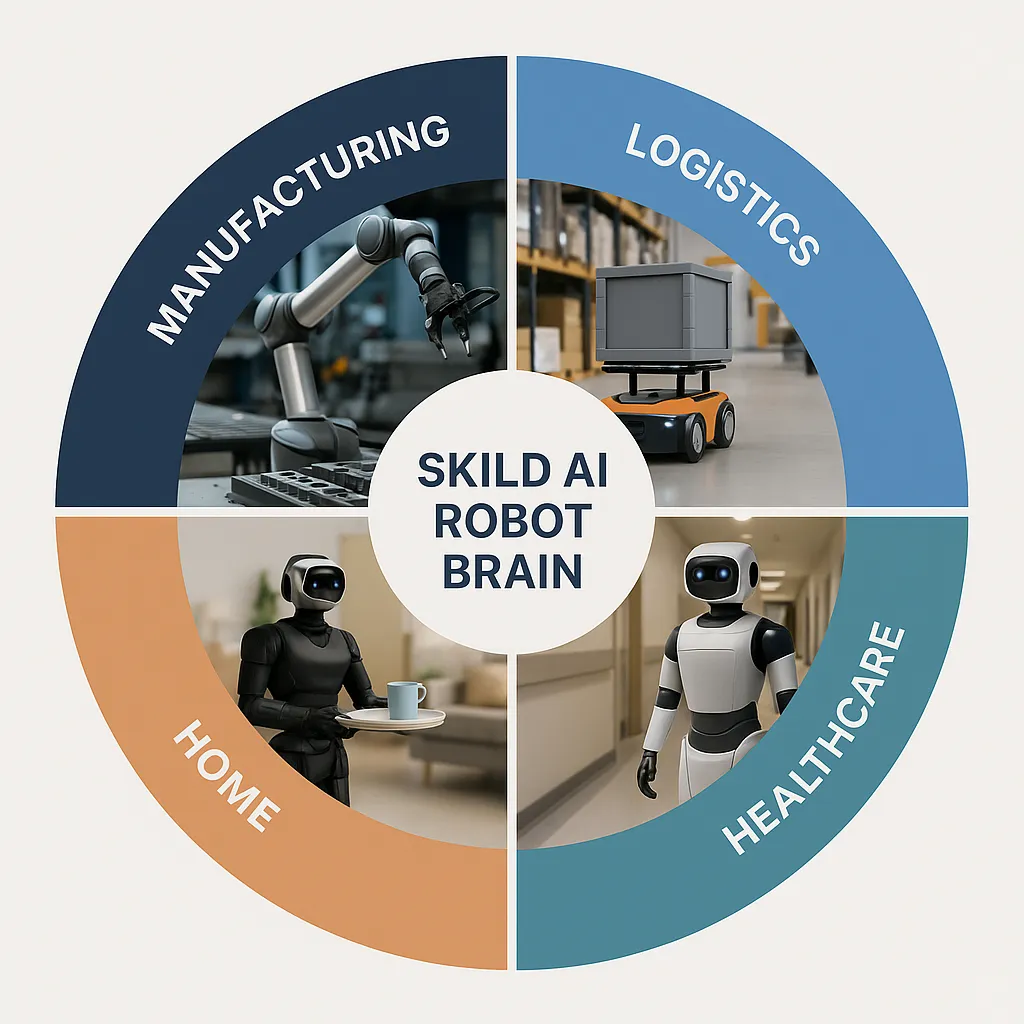
Skild AI Robot Brain vs Traditional Robotics: The GPT Moment for Machines
The emergence of the Skild AI Robot Brain marks a turning point in how machines interact with the physical world. Its impact is often compared to the rise of GPT models in natural language processing. Just as GPT unified a wide range of text-based tasks under one model, the Skild AI Robot Brain aims to unify physical intelligence across a variety of robotic platforms.
Traditional robotics depends heavily on hand-coded rules or narrowly trained models. These systems perform well in controlled settings but tend to break down when conditions change. In contrast, the Skild AI Robot Brain is designed to generalize. It learns from large-scale sensor data and real-world interaction, allowing it to adapt to new tasks with minimal fine-tuning.
GPT models showed that a single, well-trained language engine could replace dozens of specialized tools. The same dynamic is now unfolding in robotics. Each new deployment makes the Skild AI Robot Brain more capable, as it continuously improves through exposure to new environments and actions.
What makes this advancement especially powerful is its flexibility. The same model can operate a robotic arm, a warehouse transport unit, or a home assistant. This cross-platform adaptability positions the Skild AI Robot Brain as a foundational element in the future of intelligent machines.
Table 1 illustrates how Skild AI applies the foundation model philosophy of GPT to robotics, enabling machines to act intelligently across diverse real-world environments. It draws a clear parallel between language-based and movement-based generalization, showing how Skild AI may redefine how robots function across industries.
Table 1. GPT for Language vs Skild AI Robot Brain for Movement
| Aspect | GPT for Language | Skild AI Robot Brain for Movement |
|---|---|---|
| Input | Text | Sensor data (vision, motion, touch) |
| Output | Text generation, translation, summarization | Physical actions and decisions |
| Trained On | Large language corpora | Real-world interaction data and simulated environments |
| Model Goal | Understand and generate human language | Understand and execute tasks in the physical world |
| Environment | Digital context (text-based systems) | Real-world physical environments |
| Generalization | Multiple language tasks using one model | Multiple robotic tasks across hardware platforms |
| Deployment | Chatbots, virtual assistants, search, writing tools | Robotics arms, mobile robots, humanoids, service machines |
| Scaling Effect | Improved with more text and task diversity | Improves with broader sensor data and real-world feedback |
The Valuation of the Skild AI Robot Brain: From Startup to $4.5 Billion
Skild AI’s $4.5 billion valuation at the close of its Series B funding round represents more than just capital. It signals a shift in how the market views the future of robotics. This valuation was not driven by large-scale product rollouts. Instead, it reflects strategic belief in the Skild AI Robot Brain as a scalable software platform that could underpin robotics across multiple industries.
Investors see the Skild AI Robot Brain as a general-purpose intelligence layer. It is not tied to any specific machine or hardware configuration. Much like cloud infrastructure or large language models, it offers flexibility, reusability, and exponential potential through continued training and exposure to real-world data.
While many robotics firms concentrate on building physical machines, Skild AI is focused on software that scales. This approach allows for rapid improvement, broad applicability, and reduced cost per deployment. These factors help explain the company’s swift rise in valuation.
The $4.5 billion figure reflects growing investor confidence in general-purpose robotics platforms and in Skild AI’s ability to lead this emerging segment of physical intelligence.
Figure 3 compares Skild AI’s valuation growth with other major robotics companies, showing how software-focused platforms are redefining industry benchmarks.
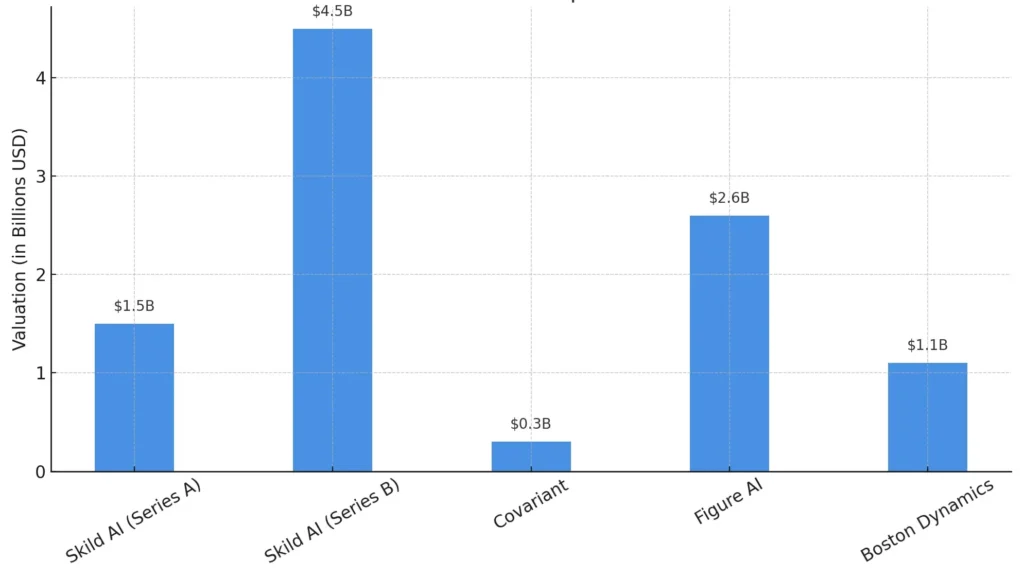
Challenges Facing the Skild AI Robot Brain: Deployment, Safety, and Scale
While the promise of the Skild AI Robot Brain is significant, turning that vision into a widely deployed system presents several challenges. Building a general-purpose intelligence for robots is far more complex than building one for text. The physical world introduces variability, risk, and uncertainty that models must handle with precision and resilience.
One major challenge is real-world deployment at scale. Training a model in simulation or in controlled environments is one thing. Getting that model to work reliably across thousands of different machines in unpredictable settings is a much harder task. Hardware inconsistencies, sensor noise, and environmental differences all affect performance.
Another concern is safety and regulation. Robots that operate near humans must meet strict standards for reliability and ethical behavior. Any mistakes in navigation, object handling, or interaction could cause real harm. The Skild AI Robot Brain must be thoroughly tested and certified before being deployed in hospitals, homes, or industrial sites.
Scalability is also an open question. While the model is designed to generalize, it still requires fine-tuning and infrastructure support for each deployment. Whether Skild AI can maintain flexibility and performance across a global ecosystem of devices will determine how far this technology can reach.
Conclusion: Is the Skild AI Robot Brain the Future of General-Purpose Robotics?
The Skild AI Robot Brain represents more than a technical achievement. It signals a shift in how intelligence is being designed for the physical world. By applying the foundation model approach to robotics, Skild AI has introduced a new way to think about machine capability, one that is flexible, scalable, and adaptive across real-world environments.
This model is not a single product or platform. It is a system that could become the intelligence layer for thousands of machines, across industries ranging from manufacturing to healthcare to personal assistance. The support from Samsung and Nvidia suggests that Skild AI is not operating in isolation. It is moving with momentum toward becoming a central figure in the evolution of robotics.
As foundation models continue to expand into new domains, the Skild AI Robot Brain may very well define what intelligent machines look like in the decade ahead.
📚 References
- Financial Times (2024) – Skild AI secures $300 million to build general-purpose robot brain
https://www.ft.com/content/c1ddf355-1de8-4c9a-a9ee-e37e4c7cf1a8 - TechCrunch (2024) – Skild AI raises $300M to build foundation model for robotics
https://techcrunch.com/2024/06/12/skild-ai-raises-300m-to-build-foundation-model-for-robotics/ - Forbes (2024) – Why Nvidia and Samsung are investing in general-purpose robotics
https://www.forbes.com/sites/greatspeculations/2024/06/13/nvidia-samsung-invest-skild-ai/ - Skild AI (2024) – Official Website
https://www.skild.ai - Nvidia Developer Blog (2023) – The rise of foundation models in robotics
https://developer.nvidia.com/blog/the-rise-of-foundation-models-in-robotics/ - Samsung Newsroom (2024) – Samsung Ventures backs Skild AI to expand robotics platform
https://news.samsung.com/global/samsung-ventures-backs-skild-ai - CB Insights (2024) – Top robotics startups to watch in 2024
https://www.cbinsights.com/research/robotics-startups-to-watch/ - IEEE Spectrum (2023) – Foundation models move beyond language and into physical systems
https://spectrum.ieee.org/foundation-models-robotics
🔑 Keywords:
Skild AI Robot Brain, Skild AI, general-purpose robotics AI, robotics foundation model, Samsung Skild AI investment, Nvidia Skild AI funding, Skild AI valuation, GPT for robots, AI for robotics, physical intelligence model, robotics startup 2024, AI robot control, foundation models robotics, multimodal robotics AI, robotics software platform, adaptive robotics systems, intelligent automation, Skild AI Series B


